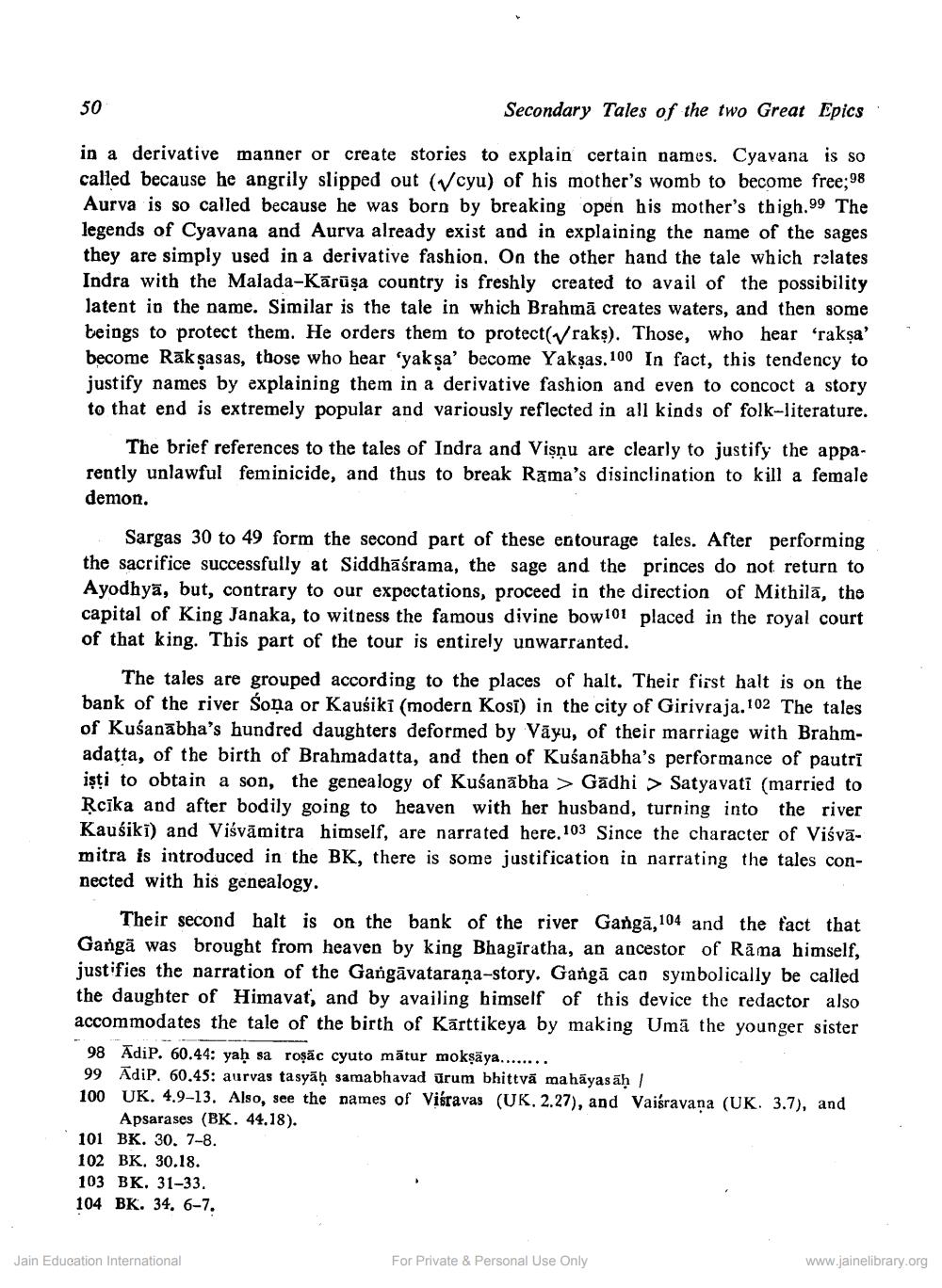________________
50
Secondary Tales of the two Great Epics
in a derivative manner or create stories to explain certain names. Cyavana is so called because he angrily slipped out (Vcyu) of his mother's womb to become free; 98 Aurva is so called because he was born by breaking open his mother's thigh.99 The legends of Cyavana and Aurva already exist and in explaining the name of the sages they are simply used in a derivative fashion. On the other hand the tale which relates Indra with the Malada-Kārūşa country is freshly created to avail of the possibility latent in the name. Similar is the tale in which Brahmā creates waters, and then some beings to protect them. He orders them to protect(Vraks). Those, who hear frakşa’ become Rākşasas, those who hear ‘yakşa' become Yakşas. 100 In fact, this tendency to justify names by explaining them in a derivative fashion and even to concoct a story to that end is extremely popular and variously reflected in all kinds of folk-literature.
The brief references to the tales of Indra and Vişnu are clearly to justify the apparently unlawful feminicide, and thus to break Rama's disinclination to kill a female demon.
Sargas 30 to 49 form the second part of these entourage tales. After performing the sacrifice successfully at Siddhāśrama, the sage and the princes do not return to Ayodhyā, but, contrary to our expectations, proceed in the direction of Mithilā, the capital of King Janaka, to witness the famous divine bow101 placed in the royal court of that king. This part of the tour is entirely unwarranted.
The tales are grouped according to the places of halt. Their first halt is on the bank of the river soņa or Kausikī (modern Kosi) in the city of Girivraja. 102 The tales of Kušanābha's hundred daughters deformed by Vāyu, of their marriage with Brahmadatta, of the birth of Brahmadatta, and then of Kuśanābha's performance of pautri işti to obtain a son, the genealogy of Kušanābha > Gadhi > Satyavati (married to Rcika and after bodily going to heaven with her husband, turning into the river Kausiki) and Viśvāmitra himself, are narrated here. 103 Since the character of Viśvāmitra is introduced in the BK, there is some justification in narrating the tales connected with his genealogy.
Their second halt is on the bank of the river Gangā, 104 and the fact that Gangā was brought from heaven by king Bhagiratha, an ancestor of Rāma himself, justifies the narration of the Gargāvataraña-story. Gangā can syinbolically be called the daughter of Himavat, and by availing himself of this device the redactor also accommodates the tale of the birth of Kārttikeya by making Umā the younger sister
98 AdiP. 60.44: yah sa rosāc cyuto matur mokşaya........ 99 AdiP. 60.45: aurvas tasyāḥ samabhavad ürum bhittvă mahāyasāḥ / 100 UK. 4.9-13. Also, see the names of Viśravas (UK, 2.27), and Vaisravana (UK. 3.7), and
Apsarases (BK. 44,18). 101 BK. 30. 7-8. 102 BK, 30.18. 103 BK. 31-33. 104 BK. 34, 6-7.
Jain Education International
For Private & Personal Use Only
www.jainelibrary.org




